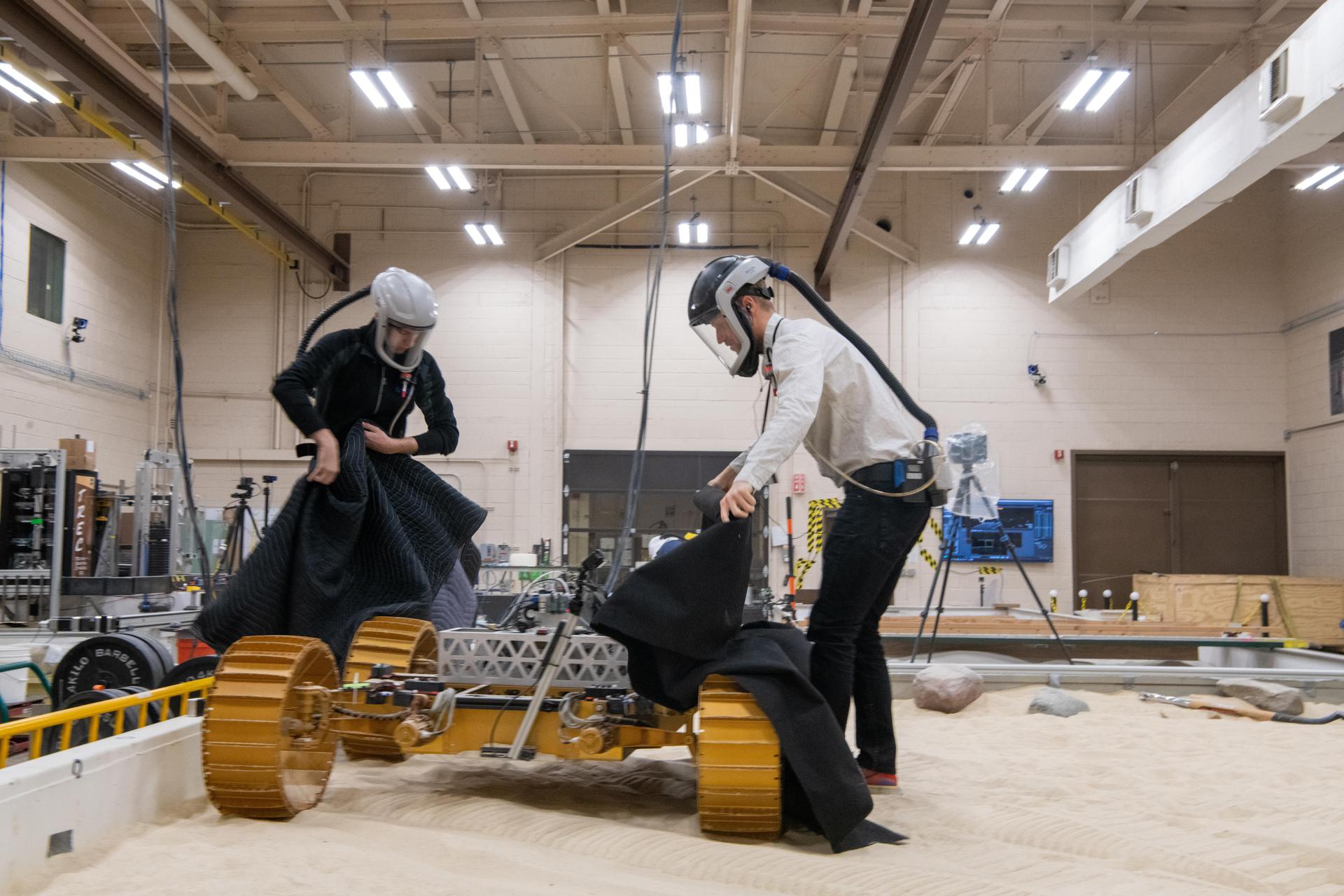In the extended entry for this blog post there are more details about the changes that NASA’s Ares V cargo launch vehicle has seen since its inception as part of NASA’s Exploration Systems Architecture Study
The information is taken from the interview on 26 February between NASA’s exploration launch project office’s advanced planning manager, and former Apollo programme rocket engineer, John “Phil” Sumrall and Aviation Week and Space Technology’s senior space editor Frank Morring and I – obviously me and Frank were interviewing Phil, not each other.
Frank’s article you can read here and my shorter story can be found here; but there were details neither of us included in our stories and I include them now, below
It is just a feature of journalism that you only have so much space – remember Frank and I are writing for our respective print magazines – so we can’t include everything
The following is not a verbatim record of what Sumrall said but my expanded notes and a few qoutes from him;
With ESAS there was an Ares V with five-segment SRBs, a 8.2m (27ft) core with two Apollo era J2S+ engines on the Earth departure stage (EDS). The ESAS design had a 45,000kg lander and a trans-lunar injection (TLI) capability with margin but there was no loitering in orbit. At the end of ESAS they were able to show a 73,000kg TLI throw weight though only declared 65,000kg capability. However the TLI deltaV budget was not great and they had to add flight performance reserve to that. Other mission requirements also ate into the TLI capability
The Ares team were given a 29degree orbital plane to widen the launch window but that cost them 7,500kg in payload margin
The decision to allow the Lander to go anywhere also meant a need for lots of deltaV capability as the further away from the lunar equator you get, it drives up that deltaV. As does a need to come back “anytime form anywhere” capability. There was also a decision to be able to inject 130,000kg into low Earth orbit, up from ESAS’s 125,000kg
Separately the Lunar Architecture Team (LAT) realised they needed to be able to send 6,500kg to the Moon and not the 4,500kg they originally envisaged. There was a consideration of a 55,000kg to 60,000kg lander but that was rejected and the LAT team was told to go back and they eventually settled on accepting a 2,000kg cargo capability
Another decision that reduced the Ares V’s capability was to change the core stage’s engines to the Pratt & Whitney Rocketdyne RS-68 engines used on the Boeing Delta IV rocket. That decision meant that they had an engine 40s slower in specific impulse (ISP) than the Space Shuttle Main Engine (SSME) and it meant they lost 10,000kg payload capability
But RS-68 has one advantage, it has a lot more thrust than the SSME and a big reason for choosing the engine was that it was so much cheaper, it could be produced at a rate of 50 a year for a fraction of the cost of the SSMEs. Now selected there are still technical changes that have to be made to the RS-68 and Sumrall identified two
They want to cut down on the amount of pressurisation helium used by the RS-68, which he thinks the RS-68A, being developed with the USAF, could resolve that, but they also have to reduce the “excess amount of hydrogen” used due to the RS-68s start up process
This start-up creates the huge fireball up the side of the booster seen during Delta IV launches and NASA has decided that that is unacceptable. Because the RS-68, on the Delta IV, only runs for 140s and on Ares V it will need to run for 205s there are also issues with the engines ablative nozzles
The adoption of six engines is another choice to make but there are problems with nozzle clearence and turbine exhaust duct interference; manifolds are a solution
Other changes that occurred due to the TLI throw weight limitations were an initial move to a 10m wide core stage and then that has been extended to the entire length of the vehicle. The 8.2m to 10m widening was triggered by the team remembering that the Saturn 1-C was 10m wide and it was made at the Michoud Assembly Facility.
And they wanted to make the vehicle taller, to lengthen the core stage and allow it to have more propellant and more capability. This would mean adding a half segment spacer (its actually one SRB casing as two casings make up one segment) to have 5.5 segment solid rocket boosters (SRB).
Sumrall explained that while this would get more impulse out of the SRBs it still won’t get them the 9,000kg flight performance margin they want, but it gets “over five tonne”. As well as lengthening the SRBs the fuel can be changed to HTPB instead of the Ares I crew launch vehicle’s PBAN fuel and filamount wound casings would also enable a higher internal rocket motor pressure they think Ares V needs for thrust.
Sumrall said that Griffin gave his approval for the introduction of new technology for Ares V and [Steve] Cook was ready to accept that as a future change to Ares I
As the SRBs would be load bearing structures, just as they are on Shuttle, and they ensure the EDS and payload doesn’t crush the core stage, so the length of the core stage is determined by the height of the SRBs. Another option is to have longer segments and just have four of them
Sumrall and his team came up with an extension that gave a total rocket length of 112.8m (370ft). This was achieved by shortening the EDS and shroud. But Ares V couldn’t be much taller anyway as Griffin had said at a review that Ares V had to fit into the existing infrastructure – the VAB gives any rocket a height limitation of 118.9m
Sumrall also spoke of the consideration of a stage between the core and EDS. The three-stage Ares V was dropped as an option because you ended up with a 122m rocket and there were also additional costs involved in developing that third stage
The EDS also changed after ESAS as they found that they could go to one engine instead of two. That saw a saving of 700kg of mass and improved the performance of the EDS. Another reason to drop the second J2S+ was that there was an issue with the power from a two engine EDS during TLI; it would actually damage the Low Impact Docking System that linked Altair with Orion
After all this, once the EDS and Altair were in orbit there was a 95-day loiter in Earth orbit for the concept of operations. That was changed from 95-days when Griffin said it was not acceptable. Instead the new target date was four-days and this may also assume a launch of the Orion CEV prior to Ares V
Reasons for the four-day change are propellant boil off and electrical power requirements. For four-days fuel cells are sufficient and solar arrays not needed. Less than four-days and batteries could be used for EDS power. During Apollo they had 15% boil off over 3h so over several days Ares V would lose a lot of propellant. To stop boil off the choice is a passive system and “we have to eliminate heat leaks”. The solution to boil off is seen as multi-layered insulation as they want to reduce the boil off losses to 1-2%, but MLI is very expensive in terms of money, not payload margin.
Soon I will be also post unpublished Ares I first-stage details from an interview with ATK personnel







